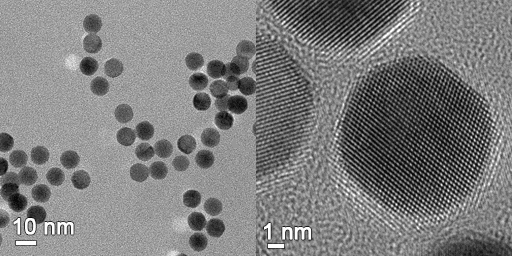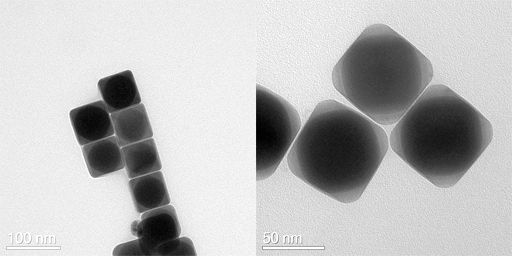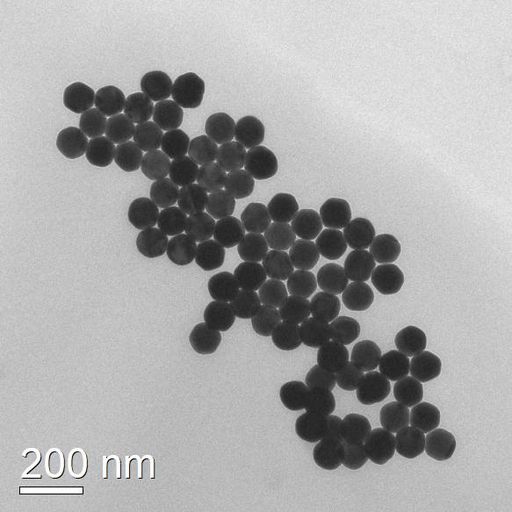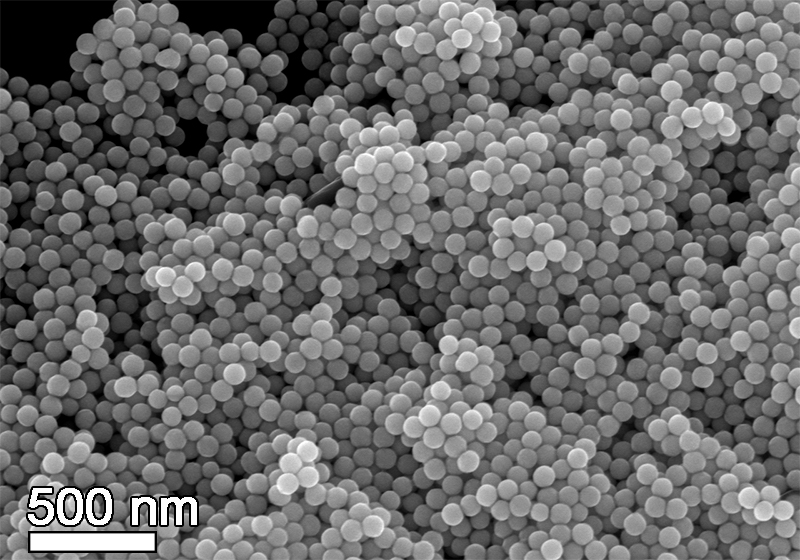NSS Au Single-Crystal Particles
This product is no longer available.
Volume: 1 mL.
CAS Number: 7440-57-5
EC: Number: 231-165-9
- Solvent carrier: Water
- Capping agent: Cetyltrimethylammonium chloride (CTAC). For other capping agents, please inquire sales@nanoscientifica.com.
- Concentration: < 0.005 wt%*
- Transport Temperature: > 5 ºC
- Storage Temperature: 5 ºC
Volume:
1 mL
Description
Nanoscientifica Gold Single-Crystal Particles covers a wide range of monodisperse, monocrystalline gold nanoparticles with a quasi-spherical shape with a low population of polycrystalline nanoparticles (<10%). Colloidal suspension of gold spherical nanoparticles shows strong light absorption in the visible region due to the intense surface plasmon resonance cross-section. NanoScientifica Gold Single-Crystal Particles are manufactured with cutting-edge technology, free from aggregation, ready to straighten their full performance in your research, development, and use in industrial-scale in your demanding applications. Our nanoparticles are precisely characterized using UV/VIS spectrophotometry, Transmission Electron Microscopy (TEM), dynamic light scattering (DLS, particle size analysis) and/or Zeta potential (surface charge) measurements.

Special features
Due to the high crystallinity, NanoScientifica Gold Single-Crystal Particles are ideal building blocks to the fabrication of multimetallic core-shell nanostructures by epitaxial overgrowth, whether to generate polycrystalline or monocrystalline shell surfaces. Due to the narrow size distribution of our nanoparticles, the sharp localized plasmon resonance peak (LSPR) enables the fabrication of ultrasensitive optical sensors and it is the most recommended product for experimental-theoretical academic works.

Physical-Chemical Properties
Ranking in order of abundance in earth crust | 75 |
Mean content in earth crust | 0.004 ppm (g/tonne) |
Mean content in oceans | 4 · 10-6 ppm (g/tonne) |
Residence time in oceans | 100 · 103 years |
Radii of atoms (ppm) | Atomic: 135Covalent: 144 |
Density (g cm-3) | 19.3 |
Molar volume ( cm-3) | 10.21 |
Specif ic heat cp at 298 K (J K–1 kg–1) | 129 |
Thermal conductivity (Wm–1K–1) | 173 K: 324273 K: 319373 K: 313575 K: 299973 K: 272 |
Coefficient of linear expansion (K–1) | 100 K: 11.8 · 10-6293 K: 14.2· 10-6500 K: 15.4 · 10-6800 K: 17 · 10-6 |
Resistivity (nΩm) | 78 K: 5273 K: 20.5373 K: 28.8573 K: 46.3973 K: 861336 K: 310 |
Mass magnetic susceptibility (m3 kg-1) | 293 K: –1.78 · 10-9 |
Youngs modulus (G Pa) | 78 |
Shear modulus (G Pa) | 27 |
Bulk modulus (G Pa) | 234 |
Poissons ratio | 0.44 |
Enthalpy of fusion ΔHfus at melting point (kJmol-1) | 13.0 |
Enthalpy of vaporization ΔHvap at boiling point (kJmol-1) | 325 |
Enthalpy of atomization ΔHat at 298 K (kJmol-1) | 366 |
Entropy S0 at 298 K (J K-1mol-1) | 47.40 |
Molar heat capacity Cp at temperature K (J K-1mol-1) | 100 K: 21.4 |
Health and Safety Information
Signal Word | Warning | |
|---|---|---|
Hazard Statements | H400-H410 | |
Hazard Codes | Xn,N | |
Precautionary Statements | P273-P391-P501a | |
Flash Point | Not applicable | |
Risk Codes | 22-36/38-50/53 | |
Safety Statements | 22-60-61 | |
RTECS Number | GL8900000 | |
Transport Information | UN 3077 9 / PGIII | |
WGK Germany | 3 | |
GHS Pictograms |
This is a preview of the recently viewed products by the user.
Once the user has seen at least one product this snippet will be visible.
Once the user has seen at least one product this snippet will be visible.












